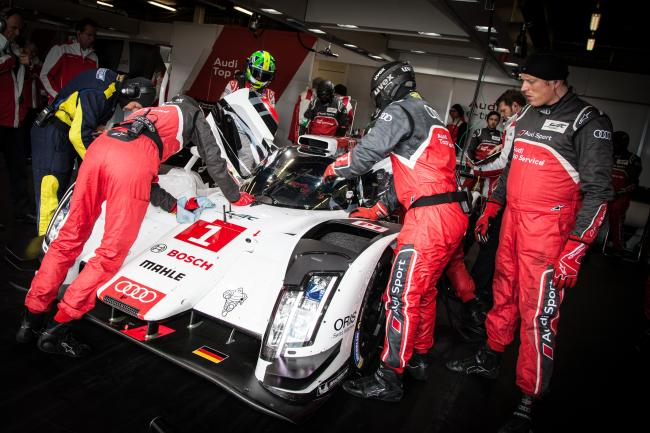

We will hear a lot in the coming months about the hybrid technology used by the manufacturers in the LMP1 category of the FIA World Endurance Championship. While complex, the automotive companies involved – Audi, Porsche and Toyota – have fully embraced the introduction of both the technology and the regulation of its use as it has a direct relevance to the different companies’ production cars of the future.
Following the provision of data and information from the manufacturers in the LMP1-H category (those who use hybrid systems on their LMP1 prototypes), the regulatory authorities have produced a table which defines the exact maximum amount of fuel that can be used on a lap of the Le Mans 24-Hours circuit. That circuit has been used as a reference, or baseline, around which all other calculations are made.
Within the regulations, each LMP1 car has potentially five ways of running their cars. One is to have no ERS (Energy Recovery System), and this option is open to Rebellion Racing or other LMP1-L/non-manufacturer entries.
There are also four hybrid powertrain options. These are defined by how much hybrid energy is released per lap at Le Mans. The options are 2, 4, 6 or 8 MegaJoules per lap of Le Mans. A MegaJoule is a unit of energy.
Because Silverstone is a shorter circuit, the amount of hybrid energy that can be released is reduced appropriately.
With Audi continuing to choose a diesel-powered engine for its R18 e-tron quattro, as opposed to Toyota’s and Porsche’s petrol-powered units for their TS040 Hybrid and 919 Hybrid, Equivalence of Technology regulations have been formulated to enable both types of fuel to compete on equal terms and to provide them with the same chance of victory.
This means that fuel energy per lap, maximum fuel flow rate and fuel tank capacity are all strictly defined for each fuel and ERS combination. In the table produced by the regulatory authorities, the amount of fuel allowed per lap reduces as the hybrid energy increases.
The first table was drawn up in June 2012, and it was modified with the approval of the manufacturers as a result of the information gathered during testing and practice carried out up until the end of March.
This table will remain in force until the end of the 2014 Le Mans 24 Hours. If it has to be modified, this will be done before the fourth round of the FIA World Endurance Championship on the Circuit of the Americas (Austin USA) on 20th September 2014. No further modifications will be made before the end of the 2015 Le Mans 24 Hours.
Fiona Miller